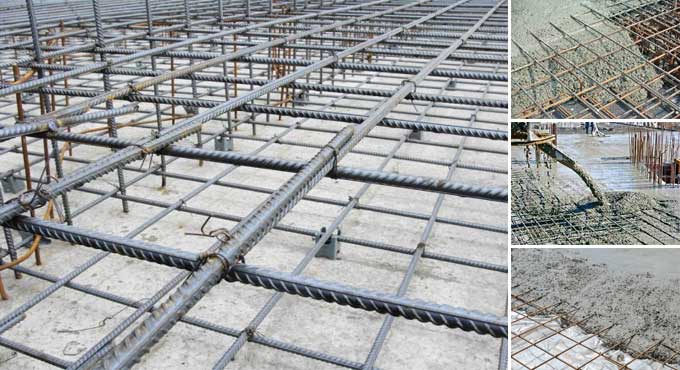NEWS | SOFTWARE | SHEET
The Reinforcing Backbone: Unraveling the Role of Rebar in Concrete Strength and Construction
Concrete, a ubiquitous material in construction, owes much of its strength and resilience to a hidden hero within its matrix, reinforcing steel, commonly known as rebar. This unassuming element plays a pivotal role in fortifying concrete structures, ensuring they withstand the test of time and environmental pressures.
The Fundamental Role of Rebar in Concrete Strength
Concrete, in its basic form, is a robust and durable construction material. However, like any material, it has its limitations, particularly in tensile strength and resistance to cracking. This is where rebar steps in as a game-changer. The primary functions of rebar in concrete include:
Tensile Strength Enhancement
Concrete, while excelling in compression strength, is relatively weak in tension. Rebar, with its high tensile strength, acts as a counterbalance. When embedded in concrete, it absorbs tensile forces, preventing cracks and enhancing the overall tensile strength of the composite material.
Crack Control
Rebar serves as a deterrent against cracking in concrete. By strategically placing rebar within a concrete structure, engineers can control and minimize the propagation of cracks, maintaining the structural integrity of the overall system.
Load Distribution
Rebar assists in distributing loads more evenly throughout a concrete structure. This ensures that the weight and stress imposed on the structure are effectively managed, minimizing the risk of localized failures.
Durability Enhancement
Exposure to environmental factors, such as freeze-thaw cycles and chemical corrosion, can compromise the durability of concrete. Rebar, often made from corrosion-resistant materials, enhances the durability of the structure by mitigating the impact of these environmental stressors.
Why Rebar Makes Concrete Stronger?
The synergy between concrete and rebar creates a composite material that excels in both compression and tension, resulting in a construction material stronger than the sum of its parts. Several mechanisms contribute to the enhanced strength when rebar is introduced to concrete:
Force Redistribution
When a load is applied to a concrete structure, rebar effectively redistributes the forces. In areas of tension, where concrete alone would be weak, the rebar assumes the load-bearing responsibility, preventing cracks and ensuring structural stability.
Crack Arresting
The presence of rebar limits the width and length of cracks that may form in concrete. By intercepting the propagation of cracks, rebar helps maintain the structural integrity of the entire system.
Increased Ductility
Rebar enhances the ductility of concrete, allowing it to deform under stress without catastrophic failure. This ductile behaviour is crucial in regions prone to seismic activity, where structures must withstand significant lateral forces.
Reduced Maintenance Needs
The durability of reinforced concrete structures translates into reduced maintenance requirements over time. The prevention of cracks and the enhanced resistance to environmental factors contribute to the longevity of the structure.
Types of Rebar and Their Uses in Construction
Rebar comes in various types, each tailored to specific construction needs and environmental conditions. Understanding the distinctions among these types is essential for optimizing their use in diverse construction applications:
Black Rebar:
- Composition: Black rebar is made from unfinished steel and has a dark, rough surface.
- Applications: Commonly used in non-structural applications where the appearance of the steel is not a critical factor. Examples include residential construction and road projects.
Epoxy-Coated Rebar:
- Composition: Epoxy-coated rebar is coated with a layer of epoxy to enhance corrosion resistance.
- Applications: Ideal for structures exposed to harsh environmental conditions, such as marine environments or areas with high chloride content in the soil.
Galvanized Rebar:
- Composition: Galvanized rebar is coated with a layer of zinc to prevent corrosion.
- Applications: Suited for structures exposed to high levels of moisture, such as bridges and marine facilities.
Stainless Steel Rebar:
- Composition: Stainless steel rebar is corrosion-resistant and maintains its structural integrity in harsh conditions.
- Applications: Commonly used in structures where corrosion is a significant concern, such as coastal constructions and chemical plants.
Welded Wire Fabric (WWF):
- Composition: WWF consists of a series of longitudinal and transverse steel wires welded together.
- Applications: Widely used in residential and light commercial construction for applications like slabs and walls.
High-Strength Reinforcement:
- Composition: High-strength reinforcement is made from alloys with enhanced strength characteristics.
- Applications: Employed in high-rise buildings, bridges, and other structures where the demand for strength is exceptionally high.
Glass Fiber-Reinforced Polymer (GFRP) Rebar:
- Composition: GFRP rebar is made from high-strength glass fibres embedded in a polymer matrix.
- Applications: Used in environments where corrosion resistance is crucial, such as wastewater treatment plants and structures exposed to de-icing salts.
Integration Challenges and Innovations
While the benefits of incorporating rebar into concrete are substantial, there are challenges associated with its integration. Ensuring proper placement, alignment, and protection against corrosion are critical considerations.
Innovations in rebar technology, such as the development of self-healing concrete and smart sensors to monitor corrosion, are addressing these challenges.
To get more details, go through the following video tutorial.
Lecturer: Visual Abstracts FIS
Self-Healing Concrete:
- Mechanism: Self-healing concrete contains capsules of healing agents that rupture when cracks form, releasing materials that react with the surrounding environment to seal the cracks.
- Applications: Particularly useful in mitigating the effects of small cracks and enhancing the longevity of structures.
Smart Rebar Technology:
- Sensors: Integrating sensors into rebar allows for real-time corrosion and structural health monitoring.
- Applications: Provides valuable data for maintenance planning and ensures timely interventions to address potential issues.
Corrosion-Resistant Coatings:
- Innovations: Ongoing research is focused on developing advanced corrosion-resistant coatings to extend the lifespan of rebar and enhance the overall durability of reinforced concrete structures.
Rebar, the unsung hero within the realm of construction materials, plays an indispensable role in fortifying concrete structures. Its ability to enhance tensile strength, control cracking, and distribute loads makes it a cornerstone of modern construction practices. The diverse types of rebar, tailored to specific applications and environmental conditions, reflect the versatility of this material in meeting the evolving needs of the construction industry.


